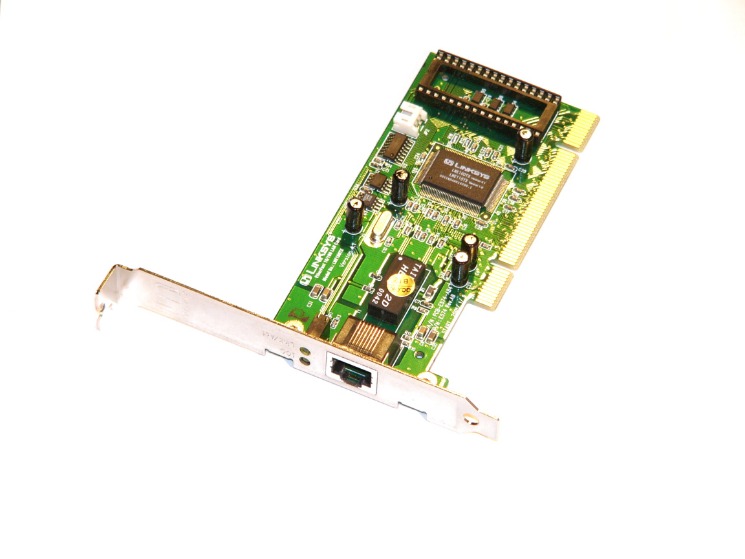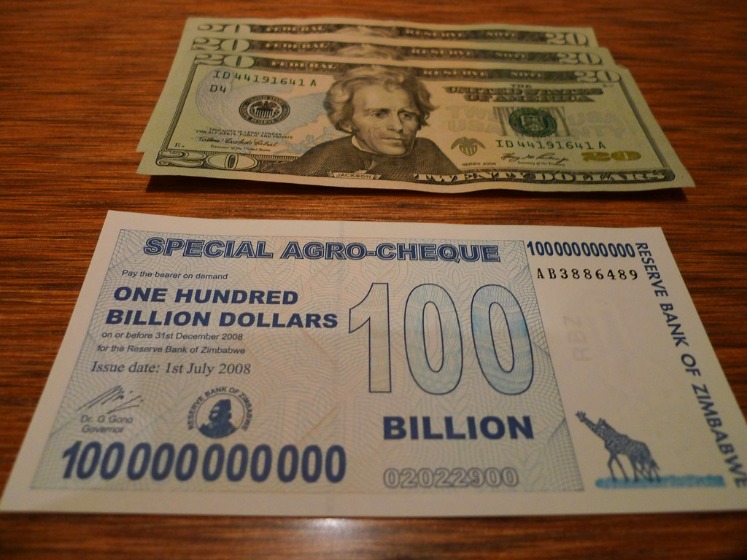Understanding Zimbabwe’s Currency History
Zimbabwe’s currency history is marked by significant economic challenges and rapid changes that reflect the nation’s struggles with inflation and monetary instability. From the introduction of the Zimbabwean dollar to the periods of hyperinflation, understanding this evolution is crucial to grasp the value of the famous 100 trillion Zimbabwean dollar note. Exploring this history provides insight into how inflation impacted the country’s economy and its currency’s worth, especially when compared to stable currencies like the US dollar.
Historical context of Zimbabwe’s currency inflation
Understanding Zimbabwe’s currency history is essential to grasp the magnitude of its economic challenges, especially regarding the iconic 100 trillion Zimbabwean dollar notes. Zimbabwe experienced extreme inflation during the late 2000s, which severely devalued its currency and led to the issuance of increasingly worthless banknotes. This hyperinflation was driven by a combination of economic mismanagement, political instability, and a decline in productive capacity, which undermined confidence in the local currency. As inflation spiraled out of control, the Reserve Bank of Zimbabwe printed larger denominations to keep up with rising prices, culminating in the massive 100 trillion dollar note in 2008, symbolizing the scale of economic collapse.
During this period, Zimbabwe’s currency rapidly lost its value against major world currencies, making everyday transactions difficult and prompting the government to abandon its own currency in favor of foreign currencies like the US dollar and South African rand. The hyperinflation ended with the adoption of these stable foreign currencies, which helped restore some economic stability. Today, the 100 trillion Zimbabwean dollar is a historical artifact of a period marked by extreme economic distress, illustrating how inflation can spiral out of control when monetary policies lack discipline and economic fundamentals are undermined. The conversion of such a note into USD highlights the staggering extent of Zimbabwe’s inflationary crisis and the importance of sound monetary management.”
The rise of hyperinflation in Zimbabwe
Zimbabwe’s currency history is marked by periods of economic instability, culminating in one of the most extreme cases of hyperinflation in history. During the late 1990s and early 2000s, economic challenges such as land reform policies, declining agricultural output, and fiscal mismanagement led to a rapid loss of confidence in the Zimbabwean dollar. By the mid-2000s, hyperinflation took hold, with inflation rates soaring into billions and eventually trillions of percent per month. This rendered the currency virtually worthless, as prices could double within hours. The government responded by issuing increasingly large denominations, including the 100 trillion Zimbabwe dollar note. Hyperinflation peaked around 2008, forcing Zimbabwe to abandon its own currency in favor of foreign currencies like the US dollar and South African rand. Today, the legacy of this period is reflected in the exchange rates, where even a 100 trillion Zimbabwe dollar note cannot equate to any meaningful amount of USD, symbolizing the devastating effects of runaway inflation on an economy.
Conversion Rates and the 100 Trillion Zim Bond Note
Conversion rates play a crucial role in understanding the value of currencies relative to each other, especially in cases of hyperinflation where currency worth can fluctuate dramatically. The 100 trillion Zimbabwean Zim Bond Note exemplifies the dramatic effects of hyperinflation, rendering high-denomination notes nearly meaningless in their local economy. Exploring the exchange rate of 100 trillion Zimbabwe dollars to USD provides insight into the economic challenges faced by Zimbabwe and the broader implications of hyperinflation on currency stability and international trade.
Exchange rate during hyperinflation
During Zimbabwe’s hyperinflation period, the 100 trillion Zimbabwean dollar bond note became a symbol of the economic crisis, reflecting the rapid devaluation of the local currency. As prices soared and confidence in the Zimbabwe dollar plummeted, the exchange rate experienced exponential increases, making traditional currency conversions increasingly complex. At its peak, the value of the bond note was virtually worthless in terms of USD, with official exchange rates often not reflecting the actual market value. In practical terms, the exchange rate during hyperinflation rendered many Zimbabwean dollar notes obsolete, leading to the use of foreign currencies such as the US dollar for daily transactions. Today, the 100 trillion Zimbabwe dollar note holds little monetary value, but it remains a powerful reminder of the extreme inflationary environment Zimbabwe endured, where converting 100 trillion Zim dollars to USD became an exercise in understanding the impact of hyperinflation on currency exchange rates.
The significance of the 100 trillion denomination
The 100 trillion Zimbabwean dollar note holds significant historical and cultural importance, symbolizing a period of hyperinflation that drastically affected the country’s economy. This denomination, among the largest ever issued globally, became a tangible representation of monetary instability and economic collapse during Zimbabwe’s hyperinflation crisis in the late 2000s. The note’s enormous denomination underscores the severity of the inflationary pressures, where everyday transactions required astronomical amounts of currency. When considering the conversion rate from Zimbabwean dollars to USD, the value of such a note diminishes remarkably, often valued at just a few cents or less, reflecting the decline in Zimbabwe’s currency value over time. The phrase ‘100 trillion Zimbabwe to USD’ encapsulates not only a comparison of monetary worth but also highlights the historical significance of hyperinflation and the importance of stable monetary policies to prevent such economic turmoil. It serves as a reminder of how monetary denominations can come to symbolize broader economic challenges and the resilience needed to recover from them.
Calculating USD Equivalent
Converting large amounts of Zimbabwean dollars to USD is essential for understanding the real value of transactions and financial comparisons. With Zimbabwe experiencing periods of hyperinflation, the official exchange rates can fluctuate significantly, making it important to accurately calculate the USD equivalent of amounts like 100 trillion Zimbabwean dollars. This process involves understanding the current exchange rate and applying it to determine the equivalent value in USD, providing clarity in international transactions and economic assessments.
Methodology for converting Zimbabwean dollars to USD
Converting 100 trillion Zimbabwean dollars to US dollars involves understanding the current exchange rate between the Zimbabwean dollar (ZWL) and the US dollar (USD). The methodology typically includes obtaining the most recent exchange rate from a reliable financial source, such as a central bank, currency exchange platform, or financial news provider. Once the exchange rate is known, the conversion is performed by multiplying the amount in Zimbabwean dollars by this rate. For example, if the current rate is 1 ZWL = 0.0025 USD, then 100 trillion ZWL would be converted by multiplying 100,000,000,000,000 by 0.0025, resulting in an equivalent amount in USD. It is important to consider that exchange rates fluctuate frequently, so the final USD equivalent can vary depending on the timing of the conversion and the source used for the rate.
Impact of hyperinflation on value measurement
Calculating the USD equivalent of 100 trillion Zimbabwean dollars presents significant challenges due to the hyperinflation experienced in Zimbabwe. During periods of hyperinflation, the value of the local currency rapidly diminishes, making traditional exchange rate calculations unreliable and often obsolete. This rapid erosion in value means that what might have been a substantial amount days or months earlier can become virtually worthless in real terms. When attempting to convert such enormous figures, it is essential to consider the historical exchange rates, the date of the conversion, and the economic context to obtain an approximate USD equivalent. Hyperinflation impacts not just the nominal value but also the perceived true worth of currency, complicating efforts to measure and compare values across different currencies or time periods accurately. Understanding this context is crucial for interpreting any conversions involving Zimbabwean dollars during hyperinflationary periods.
Current Value of 100 Trillion Zimbabwean Dollars in USD
The current value of 100 trillion Zimbabwean dollars in USD highlights the country’s ongoing economic challenges and hyperinflation. Due to severe inflation, the Zimbabwean dollar has experienced significant depreciation, making high denomination notes common. Understanding the approximate conversion rate provides insight into the true worth of such a large amount in the global currency, the US dollar.
Official exchange rates as of latest data
The current value of 100 trillion Zimbabwean Dollars (ZWL) in USD based on the latest official exchange rates is approximately $22.5 USD. Due to hyperinflation and currency reforms, the actual value can fluctuate significantly. It’s important to consider the context of Zimbabwe’s monetary situation when interpreting these figures.
- Exchange rate used: 1 ZWL ≈ 0.000225 USD
- Calculation basis: 100,000,000,000,000 ZWL × 0.000225 USD/ZWL
- Approximate value in USD: $22.5

Estimated value based on hyperinflation era rates

The current value of 100 trillion Zimbabwean Dollars in USD is extremely limited due to hyperinflation, which rendered the Zimbabwean Dollar virtually worthless. Based on estimated rates during the hyperinflation era, 100 trillion Zimbabwean Dollars would convert to only a few US cents or fractions of a dollar, roughly around $0.01 or less. This reflects the severe devaluation of the currency during that period, highlighting how hyperinflation can erode the value of money to near insignificance in international currency exchanges.
Economic Implications of Hyperinflation
The economic implications of hyperinflation can be profound and far-reaching, dramatically affecting a country’s financial stability and everyday life for its citizens. The case of Zimbabwe’s hyperinflation, reaching an astonishing 100 trillion Zimbabwean dollars, highlights the devastating effects such monetary collapse can have on savings, investments, and economic confidence. Understanding these impacts provides insight into the importance of sound fiscal policies and stable monetary systems.
Effects on savings and investments
The economic implications of hyperinflation, such as the 100 trillion Zimbabwe dollar devaluation, have profound effects on savings and investments. During hyperinflation, the rapid and uncontrollable rise in prices erodes the purchasing power of money, making savings virtually worthless and discouraging individuals from holding cash. This instability discourages both domestic and foreign investments, as investors face uncertain returns and increased risks. As confidence in the local currency diminishes, people increasingly seek alternative assets, such as foreign currencies, commodities, or tangible property, further destabilizing the economy. Overall, hyperinflation leads to economic contraction, reduced savings rates, and a decline in productive investments, which hampers long-term economic growth and development.
Government responses and currency reforms
The exchange rate of 100 trillion Zimbabwean dollars to USD exemplifies the severe economic disruptions caused by hyperinflation, which drastically erodes the value of a nation’s currency. Hyperinflation can lead to a collapse of the monetary system, loss of savings, and a decline in economic productivity as individuals and businesses lose confidence in the currency. In Zimbabwe, hyperinflation reached such levels that the government issued increasingly larger denominations, culminating in the iconic 100 trillion dollar note, yet these denominations became virtually worthless in everyday transactions.
Government responses and currency reforms are critical in managing hyperinflation. Governments often resort to measures such as issuing new currency, implementing monetary tightening, or adopting dollarization to stabilize the economy. In Zimbabwe’s case, the government attempted several reforms, including demonetization and adopting foreign currencies, to curb hyperinflation’s impact. These strategies aim to restore confidence, reduce inflation, and stabilize the economy, but often require comprehensive structural reforms and fiscal discipline.
- Introduction of a new, stable currency to replace the worthless domestic notes.
- External stabilization programs, including aid and cooperation with international financial institutions.
- Imposing fiscal discipline to control government spending and reduce budget deficits.
- Implementing monetary policies to control money supply growth.
- Adoption of foreign currencies, such as the US dollar, to restore trust and facilitate trade.
The prolonged hyperinflation in Zimbabwe serves as a cautionary tale about the importance of fiscal responsibility, the dangers of unchecked money printing, and the need for comprehensive economic reforms to prevent similar crises and restore long-term economic stability.
Historical Comparisons and Lessons Learned
Historical comparisons offer valuable insights into the effects of economic policies, inflation, and currency devaluation. By examining past instances of hyperinflation and currency collapse, such as Zimbabwe’s experience, we can better understand the challenges and lessons learned. These lessons emphasize the importance of sound monetary practices and careful economic management to prevent similar crises in the future.
Comparison with other hyperinflation episodes globally
The hyperinflation episode in Zimbabwe, culminating in the issuance of a 100 trillion Zimbabwean dollar note, provides a stark example of the destructive potential of uncontrolled monetary expansion. Comparing this with other historical episodes of hyperinflation globally reveals common patterns and valuable lessons. Hyperinflation typically arises from excessive money printing, political instability, loss of confidence in the currency, and economic mismanagement. In Zimbabwe’s case, a combination of land reform policies, economic decline, and monetary overreach led to an exponential increase in money supply, eroding the currency’s value.
Globally, notable examples include Weimar Germany in the early 1920s, Zimbabwe in the late 2000s, and more recently, Venezuela in the 2010s. Each case demonstrates that hyperinflation often results in a collapse of trust in the national currency, causing prices to skyrocket and making normal economic transactions impossible.
Lessons Learned from Hyperinflation Episodes
- Maintaining fiscal discipline and avoiding excessive government borrowing is crucial to prevent runaway inflation.
- Central banks should exercise independence to implement credible monetary policies aimed at controlling inflation.
- Price stability and confidence can be restored only through credible commitments to reducing money supply growth and, where necessary, implementing reforms.
- Reforming economic structures, establishing sound governance, and ensuring political stability are essential to recover from hyperinflation.
- Adopting a stable currency or dollarization can be effective short-term solutions, but long-term stability requires comprehensive economic reforms.
Ultimately, Zimbabwe’s hyperinflation underscores the importance of prudent monetary and fiscal policies, sound governance, and political stability in safeguarding a country’s economic future. The lessons from this episode serve as cautionary tales for nations worldwide aiming to prevent similar fiscal crises.
Lessons for monetary policy and economic stability
Historical comparisons of hyperinflation episodes, such as Zimbabwe’s 100 trillion Z$ to USD event, offer valuable insights into the importance of prudent monetary policies and fiscal discipline. These episodes demonstrate how excessive money printing, coupled with economic instability and loss of confidence, can lead to catastrophic inflation, eroding savings and destabilizing economies. Lessons learned emphasize the need for central banks to carefully balance monetary expansion with economic fundamentals, avoiding policies that could diminish trust in the currency.
In the context of Zimbabwe, the hyperinflation crisis underscored the dangers of uncontrolled monetary expansion in the absence of complementary sound fiscal policies. It highlights the importance of maintaining credible inflation targets and transparent communication strategies to anchor market expectations. For policymakers, these historical lessons reinforce the critical role of strong institutional frameworks and the importance of avoiding measures that might fuel inflationary spirals, thereby safeguarding economic stability.





0 Comments